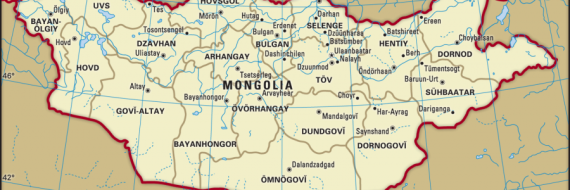Fourteen Arrested as Community & Climate Activists March in St. Louis
Posted 15 August 2011, by Sparki, It’s Getting Hot In Here, itsgettinghotinhere.org
Today, hundreds marched and saw fourteen community and climate activists arrested as the Midwest Rising! Convergencetook the streets of St. Louis to protest Bank of America and Peabody Coal.
The arrest action occurred in the intersection connecting Bank of America’s St. Louis offices and Peabody’s national headquarters.
Peabody is the world’s largest coal company and mines states like Wyoming and Montana for coal bound for coal plants in the U.S. and overseas markets. They are currently trying to build coal export terminals along the Washington coast for coal bound for Asia. Peabody has also recently taken a $61 million tax credit from the city of St. Louis, $2 million of that cash will be taken from St. Louis schools.
Bank of America is the largest forecloser in the nation and the largest funder of coal. Bank of America execs have taken over $35 million in bonuses and compensation even as the troubled financial institution took government bailouts.
Midwest Rising was made up of 400 people from 50 different organizations, including a cross-section of labor, community and climate organizations and convened in St. Louis on August 11 – 15. Organizations represented include: Missourians Organizing for Reform and Empowerment, Rising Tide, Climate Action STL, St. Louis Instead of War Coalition, Organization for Black Struggle, Little Village Environmental Justice Organization, Coal Country, Mountain Justice/United Mountain Defense, Greening Detroit, Service Employees International Union (SEIU), North County Neighbors, The Rainforest Action Network: Chicago Chapter, and Pick Up America.
Here’s the press advisory, post-action press release out soon:
Activists to March on Peabody, BofA in Unique Blend of
Community, Climate Concerns
(St Louis, MO) — “Corporations need to respect both people and the earth,” says Chelsea Ritter-Soronen, a St. Louis resident. “No one should lose their home, their livelihood or, at worst, die from bad business practices, but that happens all the time. That’s why we’re demanding that Peabody Energy, the world’s largest coal producer, and Bank of America, one of its financial partners, be better corporate citizens,” says Ritter-Soronen. “Simply put: greed kills, and we won’t stand by and let that happen.”
On Monday at noon, Ritter-Sorononen will join over a hundred activists from St. Louis and around the country to march through downtown St. Louis in a creative direct action to spotlight Peabody Energy and Bankof America’s records of environmental and human exploitation. The group, coming together under the heading of Midwest Rising, demands that:
1. Peabody Energy return the $61 million in recent tax breaks to the city, especially $2 million from the St. Louis Public Schools system, so that money can fund education and other social services
2. Peabody Energy halt its plan to build an export terminal in Washington state for the export of coal to China. Coal is a dirty fuel that worsens global warming at home and abroad; 3. Bank of America stops financing for companies engaged in mountaintop removal coal mining and companies pursuing coal export infrastructure
4. Peabody Energy end coal extraction and switch completely to renewable, sustainable energy. Bank of America shift its investment dollars away from coal and toward clean, green renewable energy.
With high levels of unemployment, increasing environmental fragility, endless wars, tax breaks for corporations, bailouts for the banks and an erosion of the social safety net that knit communities together, people find a common bond in the social justice movement. “The great support for Midwest Rising shows that people want to heal and reclaim our values of peace, justice, health, environmentalism and prosperity for all of us,” says Johnathan McFarland, organizer with Missourians Organizing for Reform and Empowerment. “We are united against the common opponent of corporate greed run amok.”
Also planned for Monday are five delegations to corporations and public offices in support of good jobs, peace, healthy food, good schools and a healthy environment. The delegations will be visiting Monsanto headquarters, Arch Coal headquarters, the St. Louis Board of Education, the office of Congressman Russ Carnahan (D-3, MO) and a local Verizon office. Each visit represents a spoke in the wheel of social justice, from demanding that Arch Coal protect Blair Mountain in West Virginia from mountaintop removal to supporting the 45,000 workers who are currently on strike at Verizon to protect their workplace benefits.
At Arch Coal, the country’s second largest coal producer, citizens will ask the company to end the damaging practice of mountaintop removal for coal extraction; and, in the immediate future, spare the historic Blair Mountain from destruction. Peace activists will visit the district office of Russ Carnahan (D-3 MO), who is currently on a trip to Israel on an AIPAC-affiliated junket. Peace activists are seeking Carnhahan’s support for Palestinian rights and a just and peaceful resolution of the conflict for everyone involved. At the Board of Education, community members will demand that corporations, like Peabody Energy, give back the tax breaks that divert funds from local schools. In St. Louis, funding for schools is needed to restore librarians and parent support specialists. In support of the ongoing strike by Verizon workers, Midwest Rising activists will join a local picket to show support for protecting good jobs over greed. At Monsanto, activists will demand that the corporation label ts genetically modified food and stop disabling indigenous ways of agriculture.
Sparki
Sparki
Scott Parkin is a Senior Organizer with Rainforest Action Network and organizes with Rising Tide North America. He has worked on a variety of campaigns around climate change, the wars in Iraq and Afghanistan, mountaintop removal, labor issues and anti-corporate globalization. Originally from Texas, he now lives in San Francisco.
(Ed Note: please visit the original site for photographs associated with this article.)


